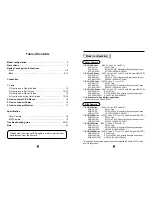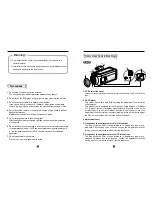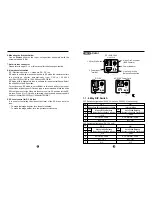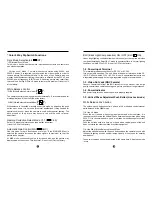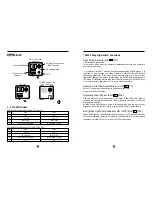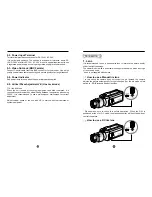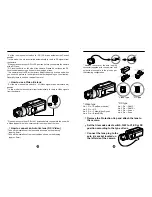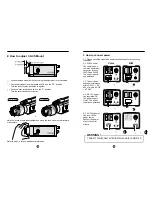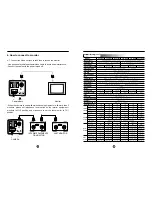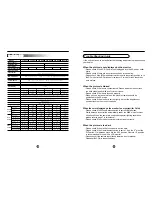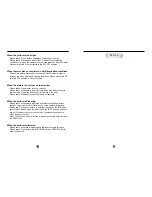
4
Adjustment
Lever
Front
1. CCD Protection Cover
Leave the cover in place when the lens is not installed. Take it off to fit the
lens.
2. C&CS mount
This holder moves back and forth by sliding the adjustment lever forwards
or backwards.
This mechanism is designed for the purpose of using all types of C-Mount
or CS-Mount lenses of different manufacturers. Mount the lens on the
holder firmly. It is set to CS-Mount position at the factory. Loosen the
adjustment lever by turning it counter clockwise a little bit in order to adjust
the C&CS mount holder. Set the focus and lock the lever.
3. Adjustment Lever
4. Flange back focus alignment area for C-Mount lens
The mount offers 0.5mm of extra tolerance to enable any type of non-
standard C-Mount lens to be focused. Loosen the adjustment lever by
turning it counter clockwise a little bit for fine tune focus.
5. Flange back focus alignment area for CS-Mount lens
The mount offers 0.5mm of extra tolerance to enable any type of non-
standard CS-Mount lens to be focused. Loosen the adjustment lever by
turning it counter clockwise a little bit for fine tune focus.
Name of each part & Functions
3
Warning !
☞
To prevent the risk of fire or shock hazard, do not expose this
camera to water.
☞
Installation of this unit should be carried out by a qualified personnel
and should conform to the local codes.
Precautions
1. Do not drop or shake the carton severely.
The box cannot give perfect protection against heavy shocks.
2. Do not touch the CCD glass by hand, as this may give a blurred picture.
3. Do not expose the camera to water or other liquids.
It can cause fire or electric shock. If water or other liquids contaminate
the unit, dry it quickly as it can corrode the electrical components inside.
4. Do not install the camera in the wet area or area of high humidity without
adequate protection.
Moisture can corrode the electrical components inside.
5. Do not turn the camera to face strong light.
Direct sunlight or strong reflected light can cause blooming or smearing
of the picture.
6. Do not install or use the camera in an environment of extreme temperature.
In temperatures of below -10
°
C use an external housing with heater built
in. In a temperatures of over +60
°
C, cool the camera with ventilation
apparatus.
7. Do not disassemble the camera.
There are no user serviceable parts inside.


